Exercises for Burning Pain the Lower Back
Your lower back is wearing you out?
We show you easy pain-relief stretches in the comfort of your home.
Your lower back is wearing you out?
We show you easy pain-relief stretches in the comfort of your home.
In our increasingly sedentary world, we find ourselves seated for hours on end - be it at the office, during our daily commute, or even at home. It's a lifestyle that has left many of us with a common, yet often debilitating issue: burning pain in the lower back. This discomfort is frequently the result of tight, shortened muscles that can be traced back to our prolonged periods of sitting.
One major culprit in this complex web of discomfort is the hip flexor—a group of muscles that plays a crucial role in mobility and posture. When we sit for extended periods, our hip flexors tend to become tight and shortened. As a result, they pull on the lower back, often leading to pain and discomfort that can impact our overall well-being.
At Five Muscles, we understand the impact of lower back pain on your daily life, and we're here with a solution. We've compiled a series of stretching exercises designed to target and relieve that persistent lower back pain:
With just a few minutes of dedication each day, you can help alleviate discomfort, improve your flexibility, and regain control over your well-being. Say goodbye to lower back pain, and say hello to a healthier, more comfortable you.
STRETCHES FOR BURNING LOWER BACK PAIN relief
As a beginner, it's important to adapt stretches for burning lower back sensation to your current level of flexibility. Start easy and gradually increase intensity as you become more flexible. This progressive approach ensures a safe and manageable journey toward improved flexibility and pain relief in your lower back. Once you advanced and feel comfortable enough to take your stretching exercises to the next level, intensify the stretches.
Follow Matt's stretching routine on video or set your own pace by using our photo instructions below.
Poor posture can be a significant contributor to lower back pain. Regular stretching exercises can promote better alignment of the spine and pelvis, reducing the stress on the lower back.
As your body becomes more aligned and balanced, you're less likely to experience discomfort associated with poor posture.
Burning pain in the lower back can be very stressful over time, if not fixed. If everyday activities like sitting or standing hurt, the pain can contribute to higher stress levels.
Stretching helps to relax and lengthen the muscles, which can reduce muscle tension and pain
Stretching helps to release muscle tension, which is often a source of lower back pain. As you gently stretch the muscles in the lower back and surrounding areas, it encourages blood flow and nutrient delivery to these tissues.
This, in turn, eases muscle spasms and helps the muscles relax, reducing pain and discomfort.
Stretching exercises for the lower back help to lengthen and relax tight muscles, promoting increased flexibility. This improved range of motion allows you to move more freely and comfortably, reducing stiffness and discomfort.
When muscles and ligaments are more supple, you're less likely to strain them during daily activities, ultimately leading to less pain.
Before beginning any exercises provided on this website, it is advised to consult a health professional, such as a physical therapist or chiropractor.
The exercise instruction and advice presented are in no way intended as a substitute for medical consultation. As with any exercise program, if at any point during your workout you begin to feel faint, dizzy, or have physical discomfort, you should stop immediately and consult a physician or doctor.
workouts
Total Exercise Time
workout mat
chair
STEP 1
Get into a lunge position with your right knee on the floor and your left leg bent at a 90-degree angle.
STEP 2
Push your hips forward until you feel a stretch in your right hip flexor.
It is important to feel the stretch in your hip flexor and to target that specific muscle. This may take some time at first, but with practice, you will develop the sense of when you are in the right position.
STEP 3
Repeat the same on the other side.
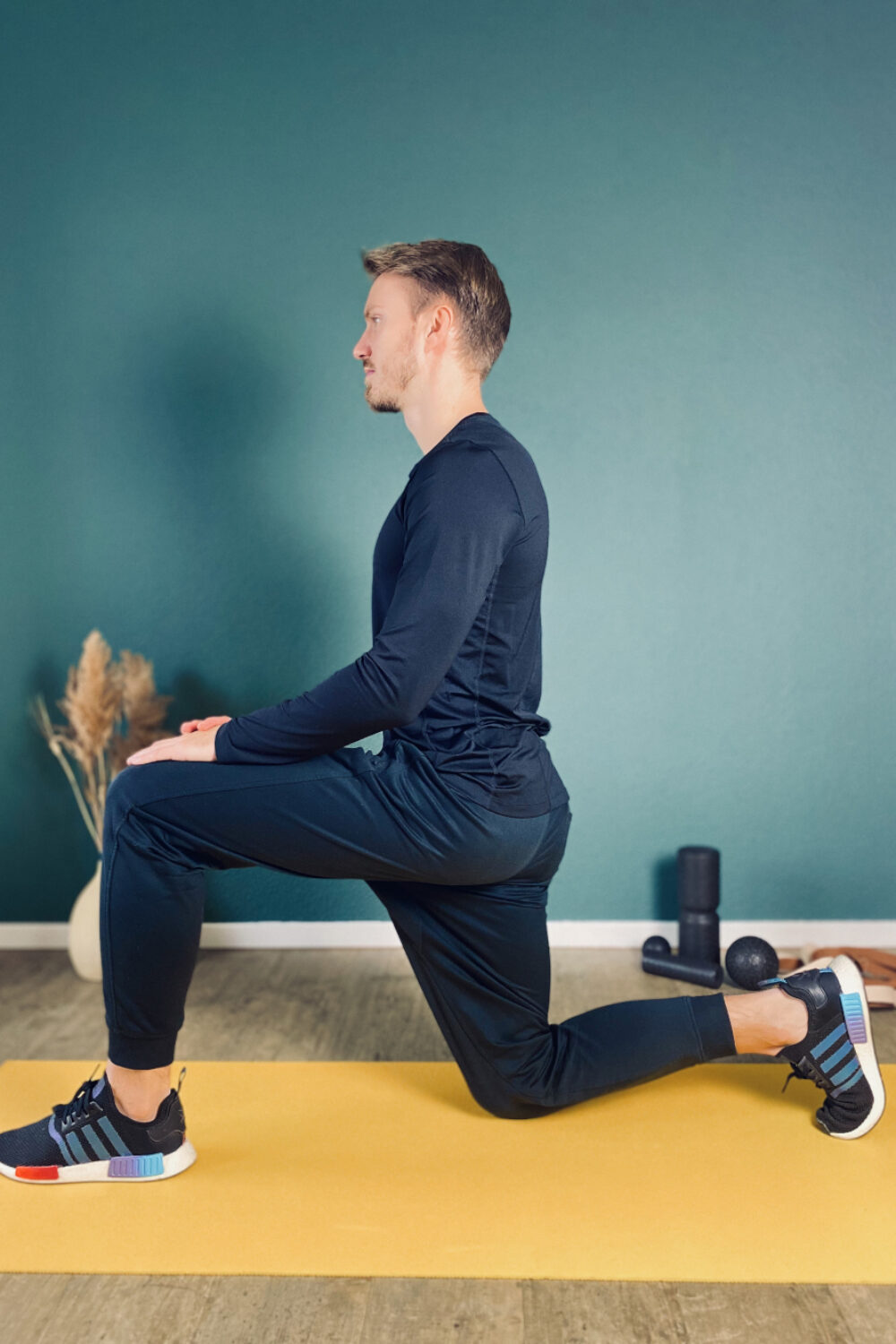

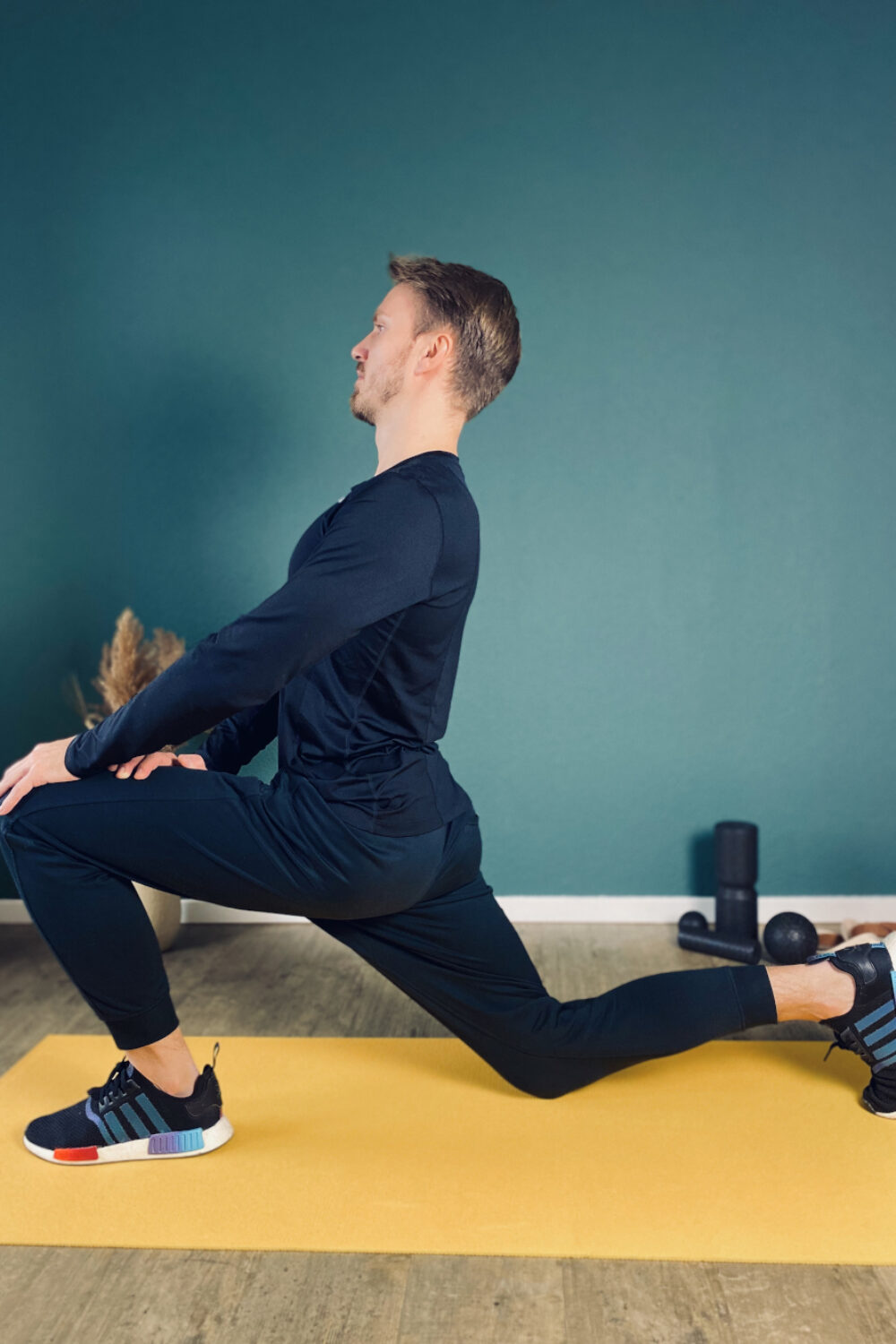
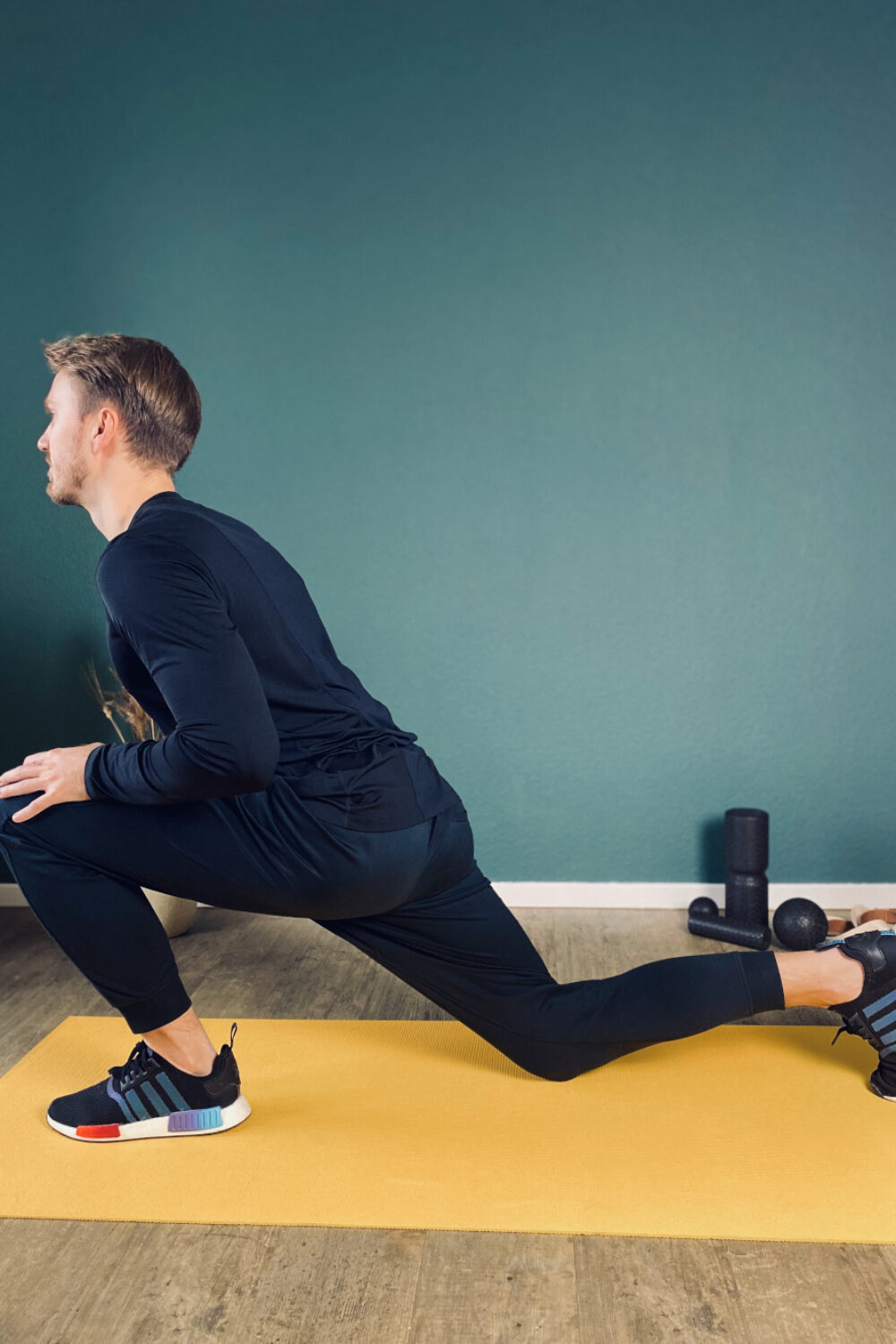
STEP 1
Lie down on your stomach. Use a sports mat or something soft if your floor is too hard.
Put your arms next to your body as if you want to do push-ups.
STEP 2
Push up only your upper body with your arms, keeping your arms extended.
Stretch your hip flexors in this position for about 1 minute.
Be careful not to go into a hollow back. Keep tension in the buttocks and lower back, while ypur groins are trying to touch the floor.
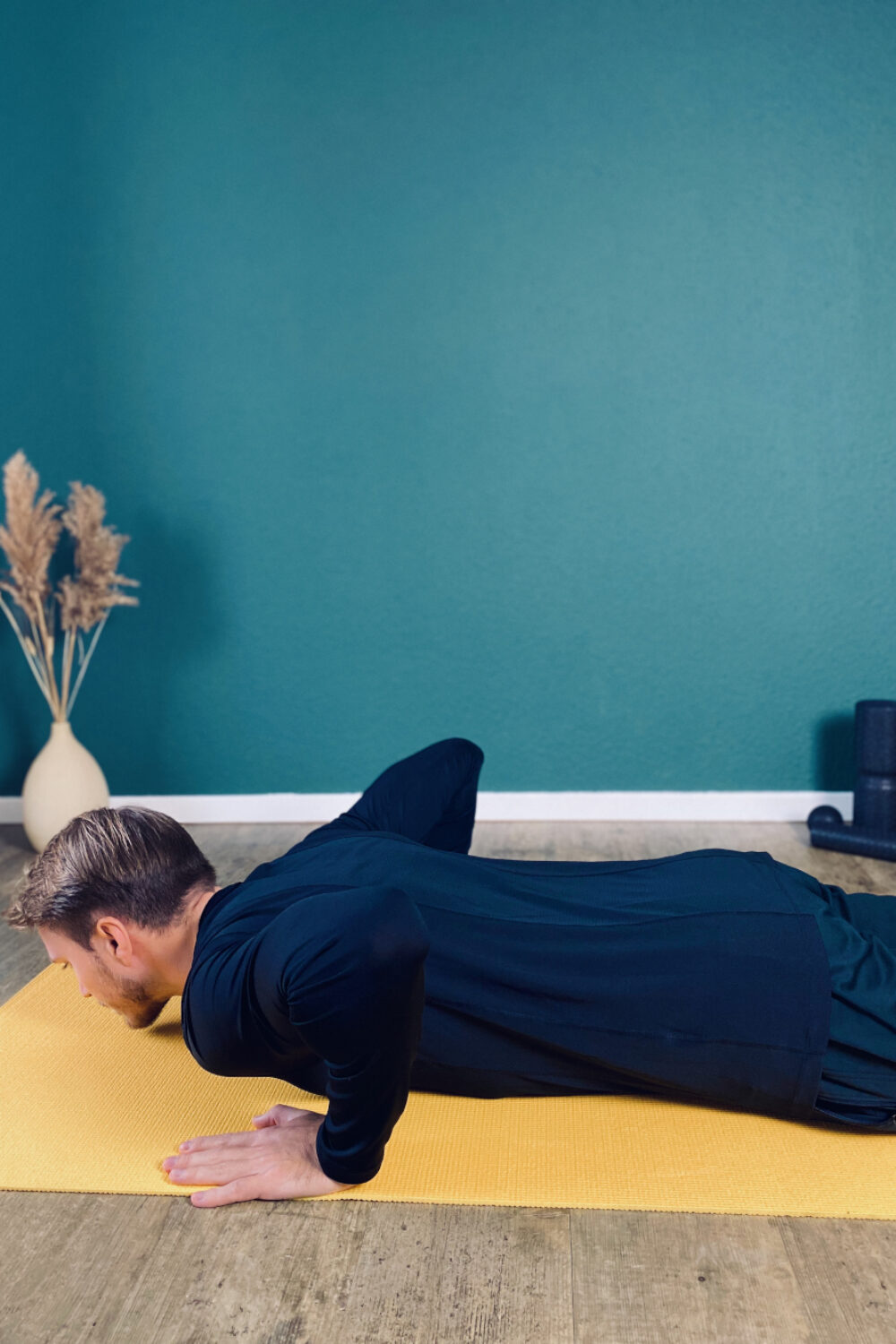

STEP 1
Sit up straight on a chair, feet on the floor slightly extended from you.
STEP 2
Reach down with your upper body and try touching your feet until you feel a deep stretch in your lower back.
STEP 3
Go a little deeper with each exhale. Hold the stretch for about 1 minute.
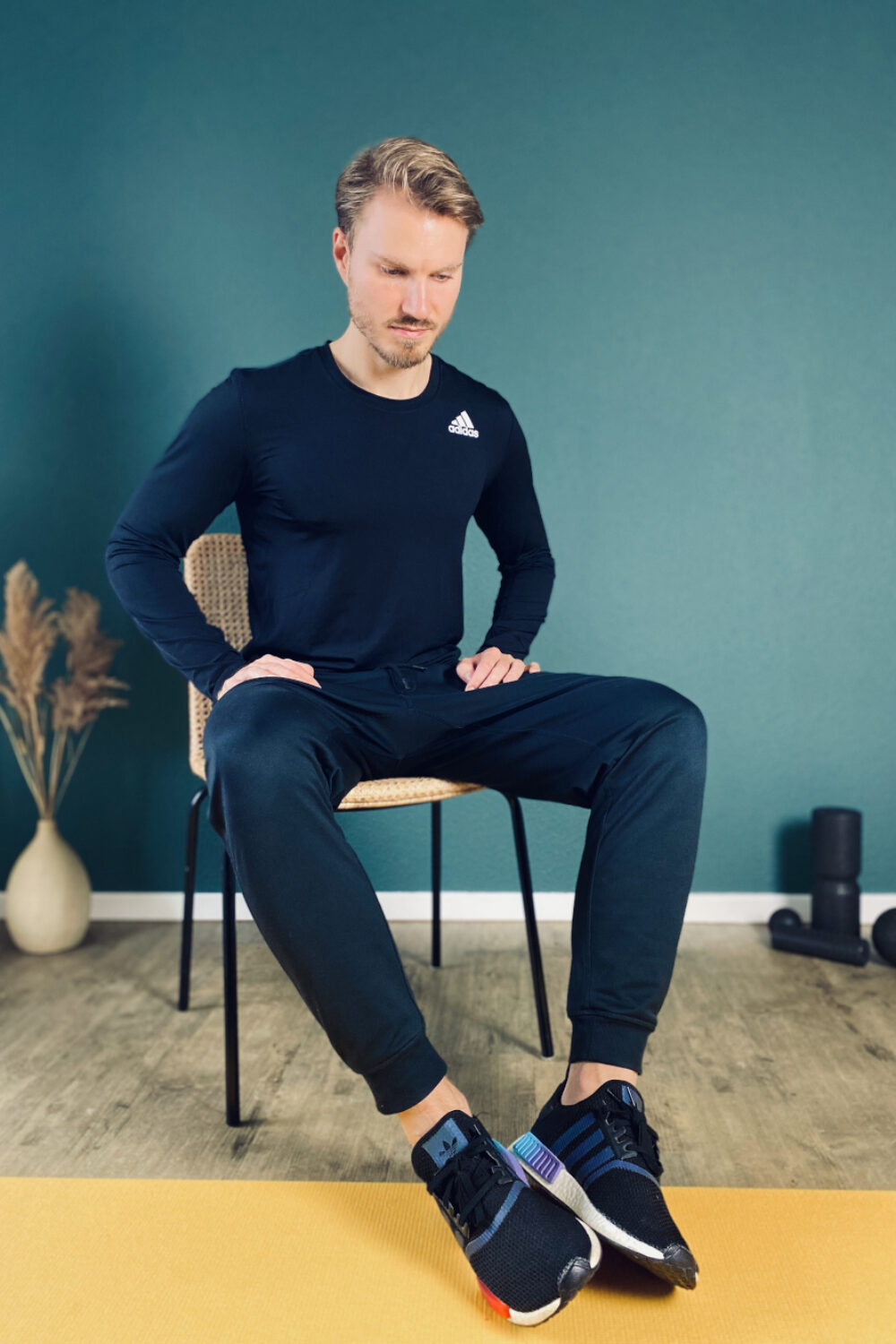
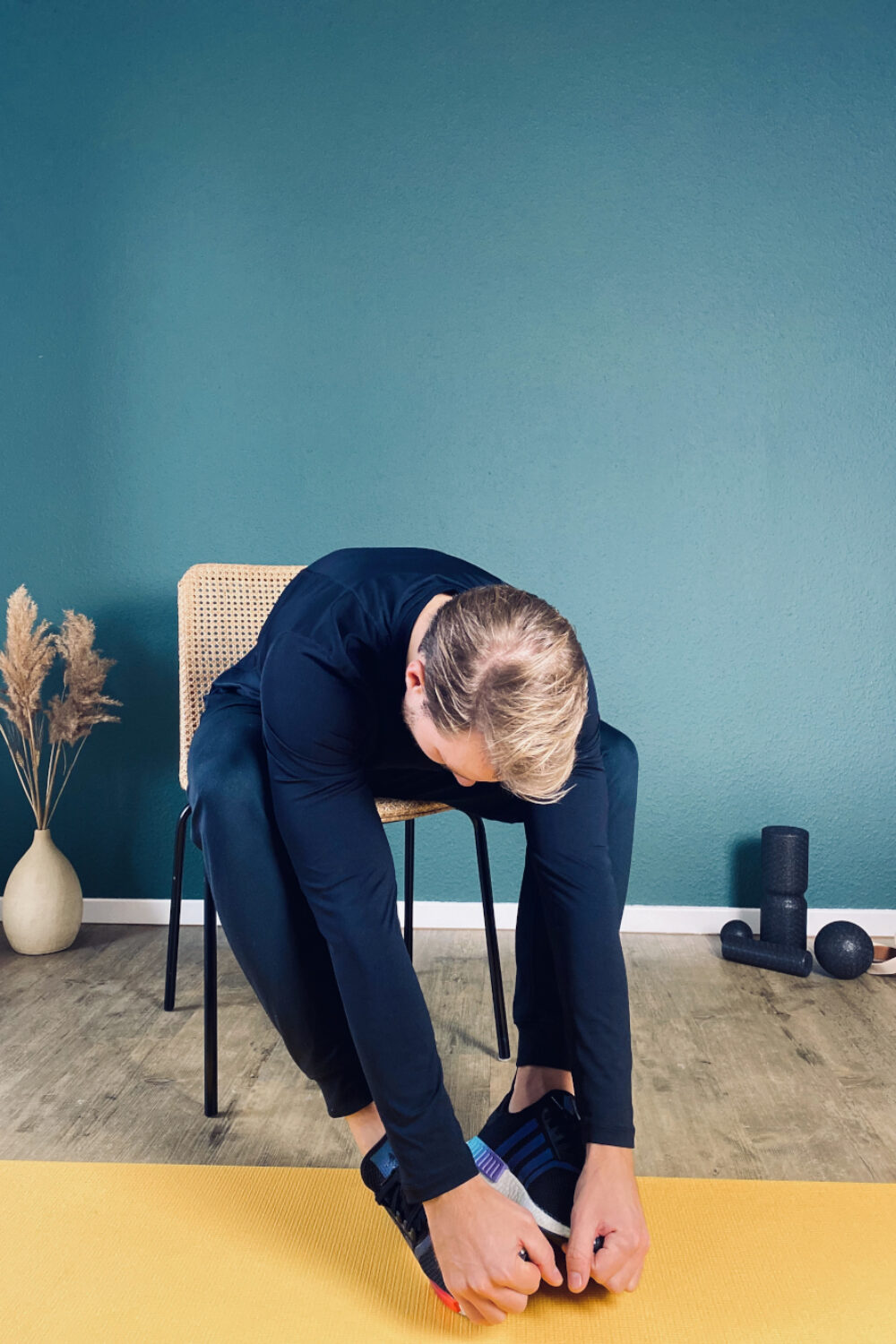
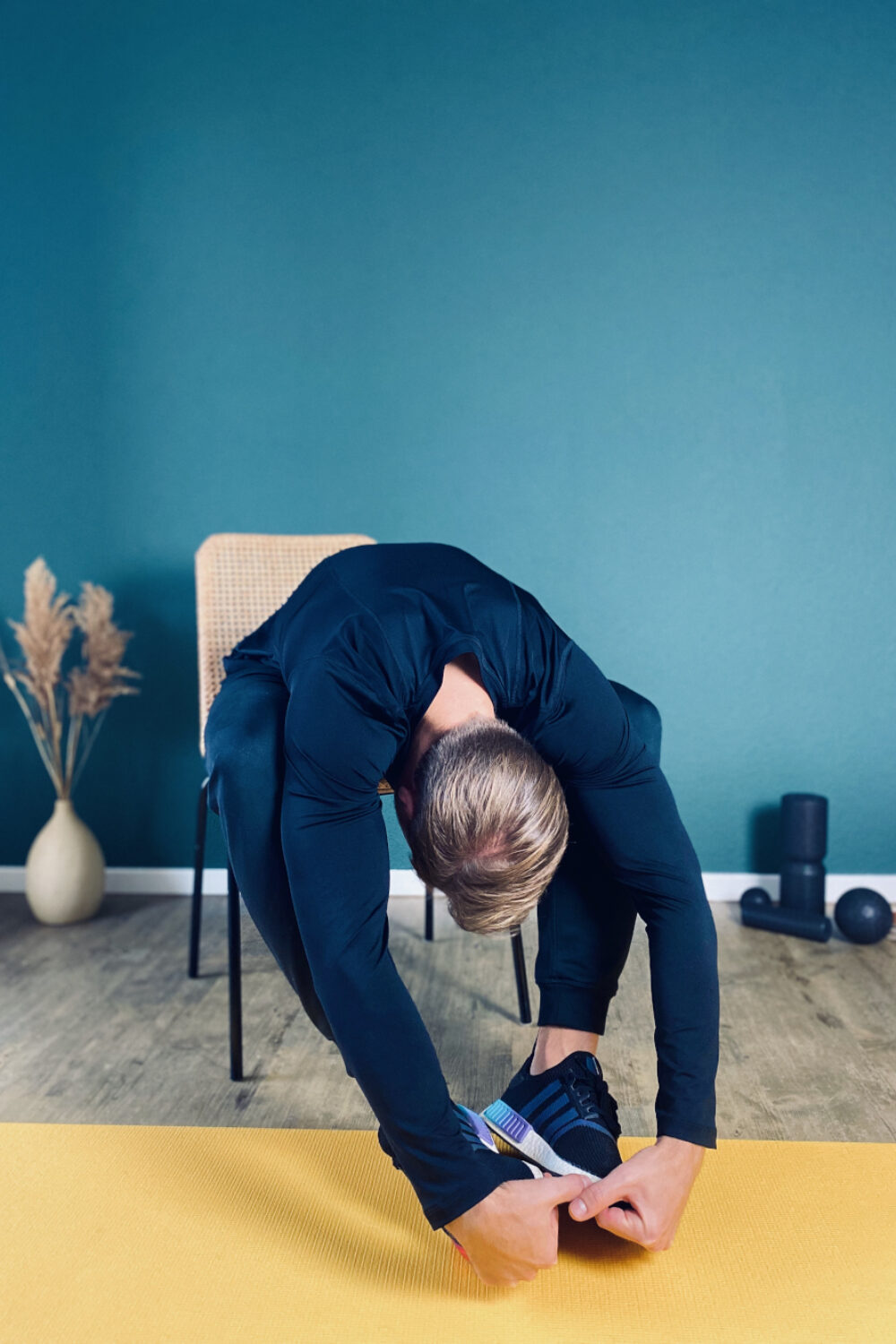
Lower back pain can manifest in various ways, and its symptoms may differ from person to person. The most common signs include:
People often experience pain when moving, especially when bending, twisting, or standing up from a seated position.
Numbness or tingling in the lower back region, buttocks, or legs is another symptom, which can be indicative of nerve involvement. The pain may also radiate down one or both legs, a condition commonly referred to as sciatica.
Poor posture and prolonged periods of inactivity are major contributors to lower back pain. When we slouch or hunch, it places excessive stress on the lower back, causing discomfort and pain. Poor posture also disrupts the natural curvature of the spine, which can lead to muscle imbalances and misalignment.
Moreover, sitting for extended hours can weaken the core muscles that support the lower back, making them less effective in stabilizing the spine. The lack of movement leads to tightness in the hip flexors, hamstrings, and lower back muscles, which can further exacerbate discomfort.
The role of poor posture and a sedentary lifestyle cannot be overstated. Educating individuals about the impact of posture and inactivity on their lower back health is crucial in promoting pain prevention and management. Understanding these factors allows people to take proactive steps to address the root causes of their pain and embrace practices that promote a healthy lower back.
Follow Five Muscle's easy stretches for lower back pain relief and start improving your life!
But what do sitting and wrong posture have to do with burning lower back pain?
Let's start by having a closer look at the burning pain in the lower lumbar region. Imagine yourself sitting. Can you see how various parts of our body turn into 90-degree shapes? Your legs, your arms, your hips. When this condition lasts a longer period of time and we sit more than we stand, we signal to the brain and muscles in that area that we no longer need our full range of motion. As a result, the affected muscles and fascia shorten, making them much tighter and less flexible than in their original state. In the case of burning lower back pain, it is the so-called hip flexor, which attaches to the front of the hip and runs through the pelvis to the lumbar vertebrae.
This hip flexor muscle is responsible for bending and extending the hip and therefore plays a very important role in standing up and sitting down. Now, when the hip flexor is shortened, it pulls our upper body forward more and more when we are upright because the flexibility for full extension is now missing. It is often the classic stooped posture in elderly people.
This is why we recommend stretches for lower back pain relief that include the hip flexor!
In order to fully understand how to get rid of burning lower back pain, we recommend stretches for lower back pain relief - besides certain other lifestyle adjustments. When you have lower back pain, people tend to desperately look for the position in which it hurts or burns less and remain in this position. Often, we avoid certain movements because it may cause pain. We believe this is an alarm signal from your body (and yes, that is often true).
When the burning back pain hits us, we try not to tense certain body regions for weeks, months, or even years in order to relieve the painful areas. That is not necessarily the wrong thing to do for a short periode of time. However, our bodies get used to this new malposition and more problem occur because of the imbalance in our body. Less movement leads to shorter muscles and more discomfort/pain. Easy stretches for lower back pain relief can be one solution instead of preventing certain movements.
We follow the misconceptional belief that the reason for lower back pain is probably weak back muscles and we start going to the gym. Stronger muscles in the back area are supposed to create better stability. This is not often the case however. When strenghtening muscles without stretching, they only become even more tight and shorter.
Hyperlordosis, often referred to as a "hollow back," is characterized by an exaggerated inward curvature of the lower spine. This condition can lead to discomfort, pain, and poor posture. However, lower back stretches play a pivotal role in addressing hyperlordosis and alleviating its associated challenges.
Hyperlordosis often results in increased tension in the lower back muscles, creating discomfort. Specific lower back stretches target these muscles, reducing tension and providing much-needed relief.
Lower back stretches work to bring the spine back to a more neutral position, countering the excessive arch of hyperlordosis. This improved alignment not only reduces discomfort but also supports better posture.
Some of the causes of a hollow back can include weak abdominal muscles, tight hip flexors, poor posture or sitting for long periods of time.
Maintaining a healthy weight and adopting a balanced diet are essential components of a lower back health regimen. Excess weight places added stress on the lower back, potentially leading to pain and discomfort. Obesity, in particular, is a significant risk factor for lower back pain, as it strains the spine and may contribute to conditions like herniated discs. Besides stretches for lower back pain relief, you might want to look into the following areas:
Hydration is often an overlooked aspect of lower back health. Proper hydration helps keep the intervertebral discs well-hydrated, enabling them to absorb shocks and maintain spinal health. Protein intake is crucial for repairing and building muscle tissue, which is essential for maintaining a strong and supportive lower back. Foods high in antioxidants, such as fruits and vegetables, can help reduce inflammation, a common contributor to lower back pain.
Regular physical activity, such as walking or swimming, helps maintain a healthy weight, keeps the muscles supporting the lower back strong, and promotes overall well-being. Additionally, incorporating stress management techniques, like yoga, meditation, or deep breathing exercises, can prevent tension and muscle tightness often linked to lower back pain.
Engaging in hobbies or exercises that promote a strong core, such as Pilates or specific core-strengthening exercises, provides better support for the lower back. Regular breaks during your day, involving standing up, stretching, and shifting your posture, can prevent lower back stiffness and discomfort associated with prolonged sitting. This is extremely important for office workers or other professions where sitting fills a big part of the day.
Find out who we are and why we think that a pain-free life is possible for everyone!